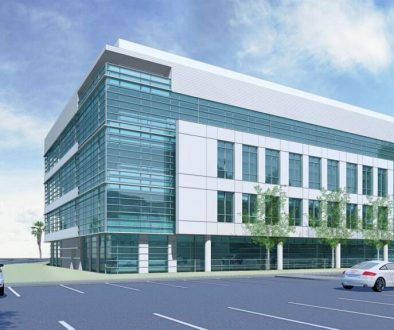Choosing Between Retail, Industrial, and Office Investments
Discover the vital considerations when choosing between retail, industrial, and office investments to make informed decisions in commercial real estate.
Choosing Between Retail, Industrial, and Office Investments
Understanding the differences between retail, industrial, and office investments is crucial for anyone looking to enter the commercial real estate market. Each type of investment comes with its unique characteristics, potential returns, and market dynamics. This article will guide you through the significant factors that influence these investment types, helping you make an informed decision based on your financial goals and market conditions.
Introduction
The commercial real estate sector presents numerous investment opportunities, but choosing the right path can be daunting. With the varying demands and characteristics of retail, industrial, and office spaces, investors must evaluate their options thoroughly. The right choice can lead to substantial returns, while the wrong one can result in financial strain. This blog post will dissect the three main types of commercial real estate investments, offering insights into their benefits and drawbacks, market trends, and what to consider when diving into these sectors.
Understanding Retail Investments
Retail investments involve properties that are primarily used for selling goods or services directly to consumers. These properties include shopping malls, standalone stores, and restaurants.
- Market Trends: Retail investment has seen significant shifts, especially with the rise of e-commerce. According to the U.S. Census Bureau, e-commerce sales accounted for over 14% of total retail sales in 2022, changing how physical retail spaces are utilized. Investors need to keep an eye on how local consumer habits are evolving and must consider locations with foot traffic and accessibility as key factors.
- Risks and Rewards: Investing in retail can yield high returns, particularly in strong economic climates. However, the risks are equally substantial. Vacancies can be a significant issue, especially in the wake of changing consumer preferences. Properties in prime locations may see less risk, but they often come with a higher price tag.
- Example: Consider a shopping center in a suburban area that has a well-known grocery store. This type of anchor tenant can draw consistent foot traffic, increasing the likelihood of success for smaller retailers within the center.
Exploring Industrial Investments
Industrial real estate encompasses properties used for manufacturing, warehousing, distribution, and logistics. As e-commerce continues to shape market demands, the industrial sector has become an attractive investment avenue.
- Demand Surge: The COVID-19 pandemic accelerated the growth of e-commerce, leading to a heightened demand for warehouse and distribution spaces. The Industrial Production Index showed a notable increase in production activity, reflecting the sector’s resilience. Investors will want to focus on properties that are strategically located near transportation hubs.
- Long-Term Leases: Industrial properties often feature longer lease terms, providing investors with stability and predictability in cash flow. Moreover, tenants typically cover property expenses, which further enhances the investment’s allure.
- Comparative Analysis: Unlike retail, which may face challenges from online shopping, industrial properties benefit from it. As companies like Amazon expand their logistics operations, the need for efficient warehouse spaces is only expected to grow.
Delving into Office Investments
Office real estate involves spaces designed for business operations, such as corporate headquarters, shared workspaces, and professional service offices. The office market has undergone immense challenges, especially in light of the recent shift towards remote work.
- Current Trends: The demand for office spaces depends heavily on economic conditions and business performance. With many companies adopting hybrid work models, there is a growing trend for flexible office spaces, such as co-working environments. According to JLL, the demand for flexible workspaces is predicted to continue rising, indicating a shift in how office investments are viewed.
- Vacancy Rates: Office spaces in prime locations tend to have lower vacancy rates. However, the rise of remote work has resulted in increased vacancies in traditional office spaces, making it vital for investors to assess the long-term viability of their office investments.
- Expert Insight: Real estate analysts emphasize the importance of location, amenities, and design in office investments. Modern offices equipped with technology and collaborative spaces tend to attract higher-quality tenants, making them a more desirable investment option.
Comparative Analysis of Investment Types
When considering investments in retail, industrial, or office spaces, it’s crucial to weigh the pros and cons of each type.
- Retail Pros vs. Cons:
- Pros: High potential returns; consumer-driven properties can thrive in bustling locations.
- Cons: Vulnerable to economic downturns and changing consumer habits.
- Industrial Pros vs. Cons:
- Pros: Long lease periods; resilient in e-commerce growth; lower operating costs.
- Cons: Potentially high initial investment; geographical limitations based on transportation access.
- Office Pros vs. Cons:
- Pros: Stable income from long-term tenants; strong demand in urban areas.
- Cons: Susceptible to economic cycles and remote work trends; may require renovations to remain competitive.
Practical Considerations for Investors
Before diving into any of these investment types, prospective investors should consider several practical factors:
- Market Research: Thoroughly analyze local market conditions and trends. Understanding demand dynamics can guide investment decisions.
- Investment Horizon: Determine your investment timeline. Retail and industrial properties might offer quick returns, while office investments typically require a longer commitment.
- Financial Assessment: Evaluate your financial situation, considering maintenance costs, taxes, and potential vacancies. Understanding the total cost of ownership will prevent unexpected financial burdens.
- Location Analysis: The location of a property can significantly affect its performance. Assess regional economic indicators, demographic trends, and infrastructure developments.
- Diversification: Investing in multiple property types can mitigate risks. A balanced portfolio can offset challenges faced in one sector with strengths in another.
Conclusion
Choosing between retail, industrial, and office investments requires careful consideration of various factors, including market trends, potential returns, and personal investment goals. Each investment type has its unique strengths and challenges, making it essential for investors to conduct thorough research and analysis.
As you explore opportunities in commercial real estate, remember that informed decision-making is key to success. With a strategic approach and a keen understanding of market dynamics, you can choose an investment path that aligns with your objectives. Whether you are looking to capitalize on the growth of e-commerce through industrial properties, engage with vibrant retail opportunities, or navigate the evolving office landscape, the right investment can yield significant rewards.
Ready to embark on your investment journey? Contact us today to explore our commercial real estate listings and find the opportunity that suits you best!



